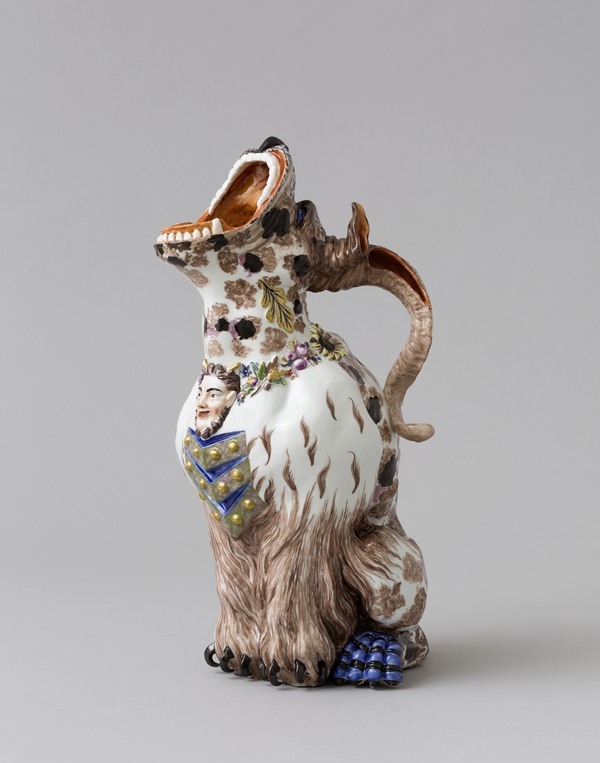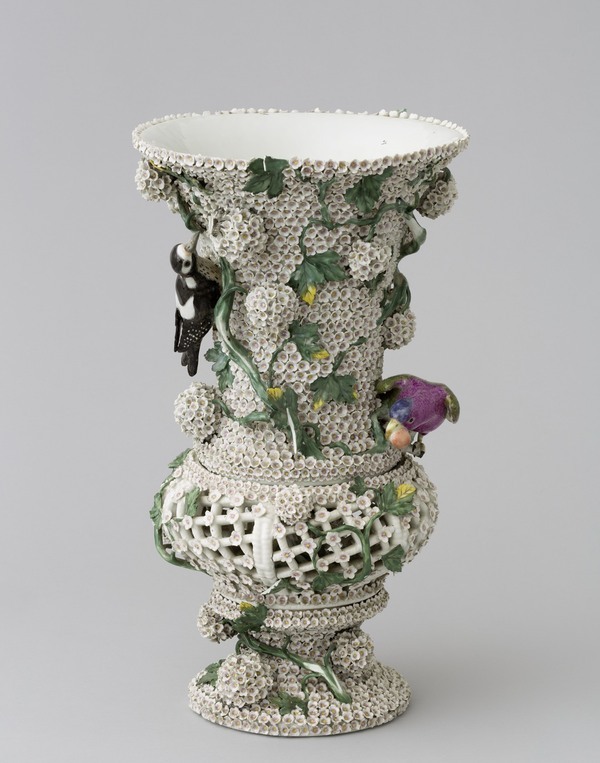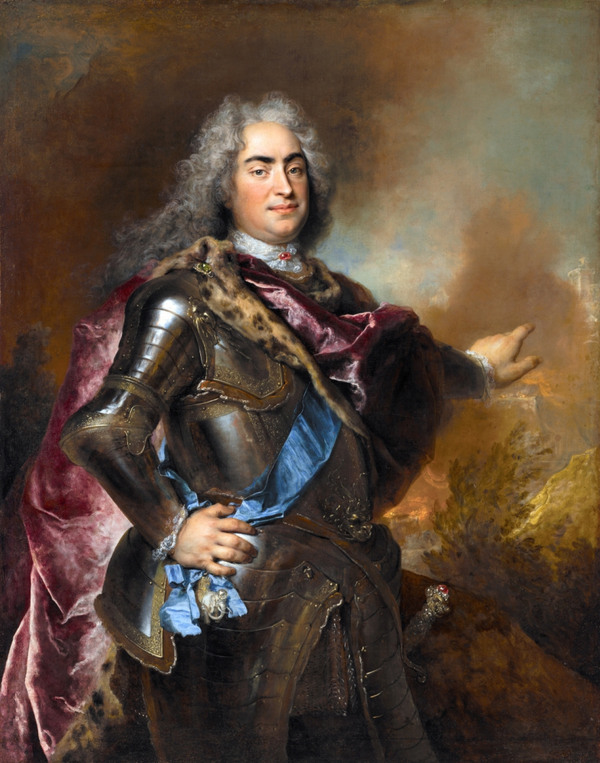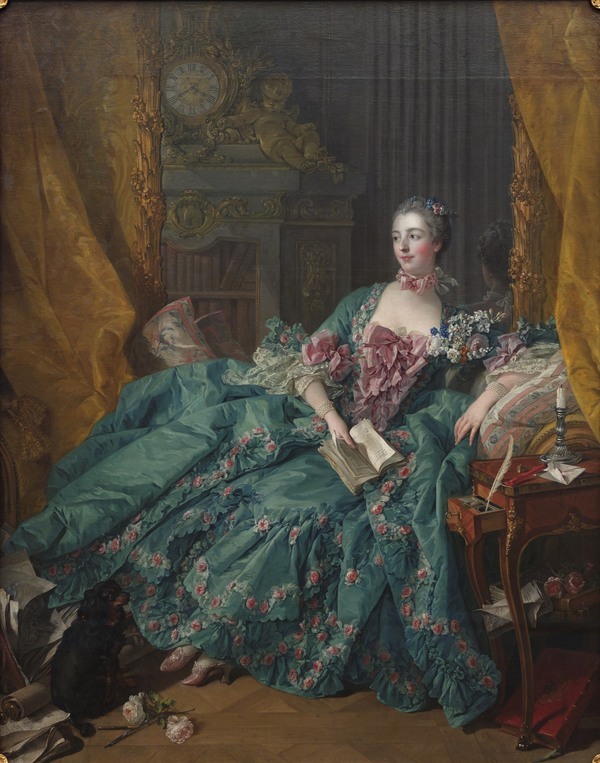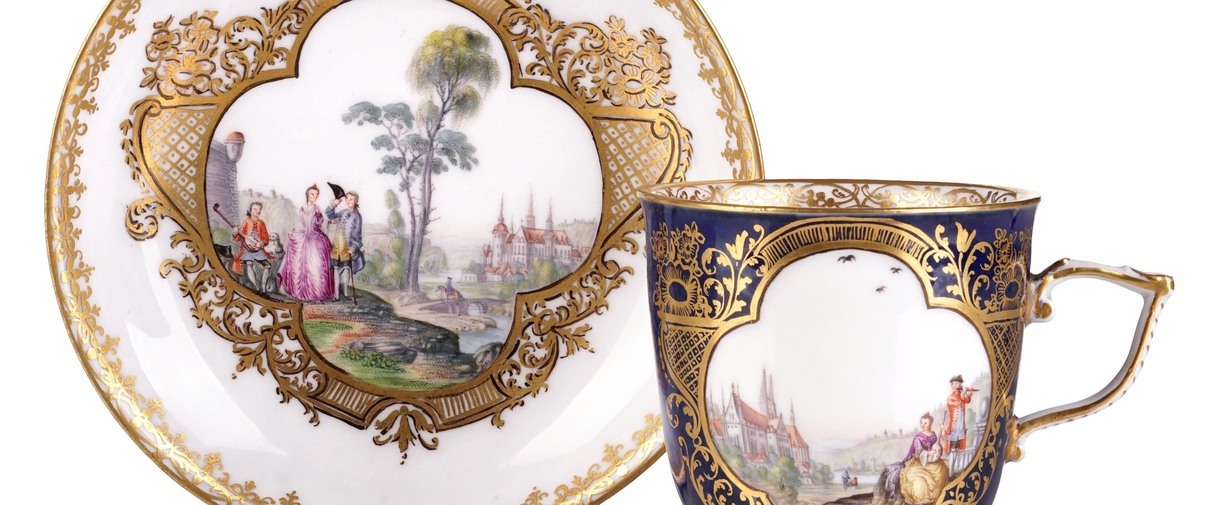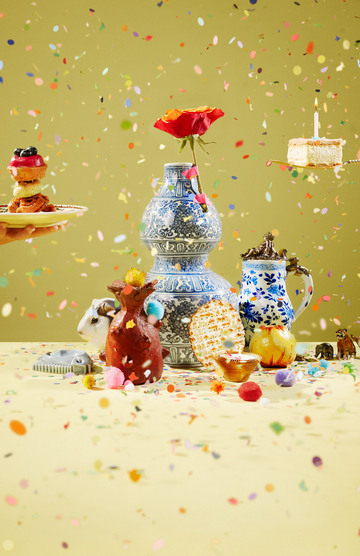Design
The Porcelain Fever exhibition takes visitors through six regally designed rooms, where they will encounter the earliest experiment from Italy, Augustus’ frenzied amassing of Asian porcelain and Meissen’s first experiments, as well as a life-size zoo. Visitors not only come face to face with Augustus the Strong and Madame de Pompadour, but also other European monarchs and the porcelain that connected them. The exhibition ends in the splendour of the French court, resplendent with flowers, ornate frames, soft colours and painstaking details. The spatial design of the exhibition is by Tatyana van Walsum; the graphic design by Marline Bakker-Glamcult Studio.
Publication
The exhibition will be accompanied by a richly illustrated, 224-page publication that dives deeper into the remarkable genesis of European porcelain, based on a number of key figures. Rarely has an art history book been populated by such colourful characters, so much intrigue and so many lavish and exuberant objects. In addition to the curators of the exhibition, Denise Campbell and Laura Smeets, the publication includes contributions by experts from Germany, France and England.
The bilingual (Dutch and English) catalogue Porseleinkoorts. Het wonderbaarlijke ontstaan van Europees Porselein / Porcelain Fever. The wondrous origins of European Porcelain is published by Waanders Uitgeverij Zwolle, and costs €29.95.
Celebrate!
Based on twelve different celebrations, the Princessehof presents a vivid exhibition of personal, religious and cultural celebrations and commemorations that mark important moments in life. It features children’s celebrations, Lunar New Year, Carnival, Passover, student parties, birthdays, a selamatan, weddings, Eid al-Fitr (Sugar Festival), Ketikoti, Diwali and Christmas. Celebrations vary widely, but food and drink almost always play an important role, and so do ceramics. When we have something to celebrate we usually take out our finest tableware from the cupboard, even if it’s just that (slightly damaged) dish your grandmother gave you years ago. It is precisely these personal stories that form the starting point of this associative exhibition, which features twelve installations with many ceramics from the museum’s depot as well as cherished objects from partygoers from all over the country. They talk about their celebrations and traditions in audio stories In the exhibition, which also includes interactive elements. Share your best party experiences on the door of a student room, set a royal table, arrange your own nativity scene and take a festive selfie in the photobooth. Celebrate! will be on display at the Princessehof in Leeuwarden until 7 January 2024.
